
There Will Be Oil
The 1930 discovery of the East Texas oil field–the largest in the contiguous United States–changed communities like Kilgore forever
By Robyn Ross
Crude Awakening
Spindletop, the landmark gusher near Beaumont, put Texas on the oil map in 1901 and began shifting the state’s economic focus from agriculture to petroleum. Three decades later, wildcatters near the East Texas town of Kilgore tapped into an even larger reservoir of oil—one that continues to produce today.
Kilgore’s population ballooned from a few hundred to more than 10,000 in the early ’30s as the railroad brought an influx of characters fleeing the Great Depression. Boomtown diversions like movie theaters and baseball clubs offset the chaos, and oil revenues helped build Kilgore College. East Texas oil also fueled the Allied forces during World War II.
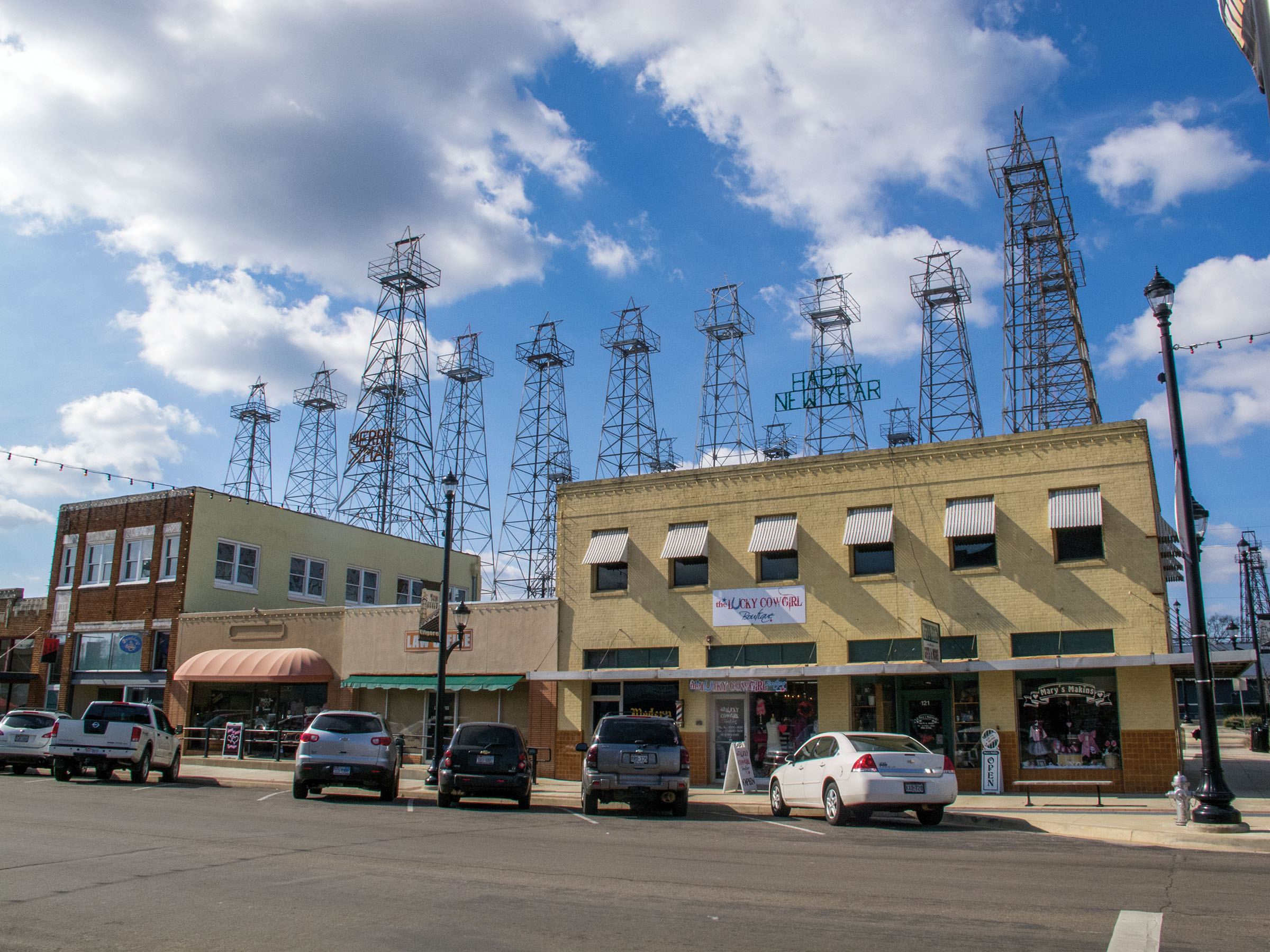
Camping Out
Many oil-field workers lived in “tent houses,” temporary, cabin-like dwellings with wooden and canvas walls and a canvas roof. Over time, some families added sturdier walls and a better roof to turn a tent into a home. Visitors to the Gaston Museum can explore an original, fortified tent house.
Gaston Museum
6562 State Highway 64, Joinerville
903-722-9016; gastonmuseum.org
The World’s Richest Acre
Oil companies and prospectors drilled everywhere, including the Presbyterian church, where members tore down their sanctuary to drill in its place, and the Kilgore National Bank, where oilmen drilled a well right through the floor. By 1940, 24 wells were pumping in one city block, leading to its moniker, “The World’s Richest Acre.” By the early 1960s, all but one derrick had been removed from that block, as production declined. But in the ’90s, the Kilgore Historical Preservation Association turned the space into a park and added 12 more derricks to recreate the historic skyline. Located at Commerce and Main streets, it now celebrates the town’s oil-boom history.
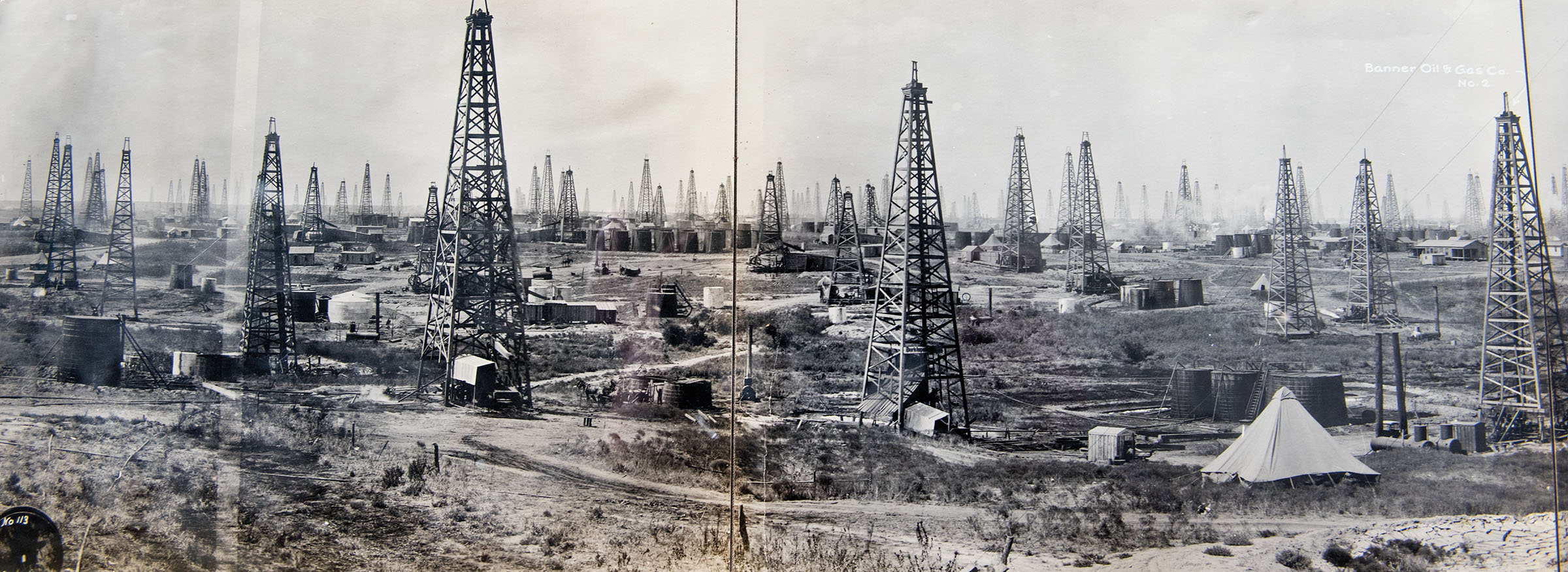
1,000+
The number of derricks in Kilgore during the 1930s boom.
5,379,780,304
As of 2017, the number of barrels of oil the East Texas oil field has produced.
42
The number of gallons of oil in a barrel.

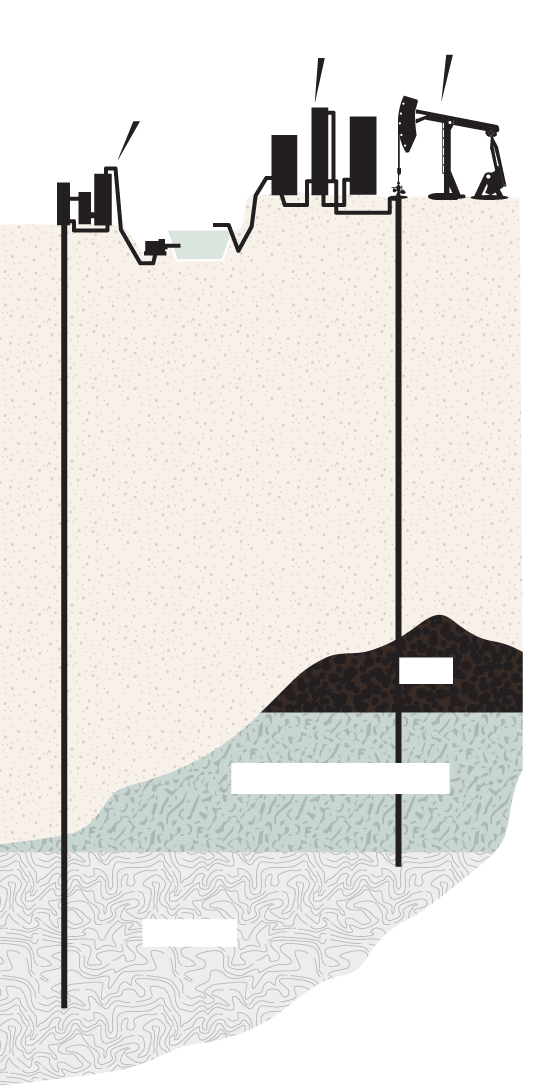
Tank Battery
Oil wells
Salt water disposal well
Oil
Oil-Water Mixture
Water
Salt of the Earth
The Woodbine Formation, where the wells struck oil, is a layer of sandstone packed with both oil and salt water. Since 1942, the East Texas Salt Water Disposal Company has injected the salt water that the wells pump to the surface back into the Woodbine. This strategy maintains underground pressure and allows the oil wells to keep producing. The company currently reinjects almost 900,000 barrels of salt water per day.
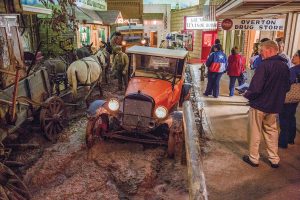
Photo: Will van Overbeek
Well, Well, Well
The East Texas Oil Museum, on the Kilgore College campus, examines the environmental, financial, and social impact of the oil boom.
East Texas Oil Museum 1301 S. Henderson Blvd., Kilgore 903-983-8295
Boomtown, USA
Walk the recreated 1930s main street—a living, breathing (take a close look at the mannequins) replica of a town transformed by the oil boom. Visit the general store, Gusher Gazette newsroom, and movie theater, where you can watch The Great East Texas Oil Boom.
Rock Bottom
Take the Elevator Ride to the Center of the Earth, an eight-minute simulated journey inside a repurposed freight elevator. “Descend” through layers of sediment while a puppet named Professor Rockbottom explains the geology of the East Texas oil field.
Inner Core
An exhibit running April 25 to June 6 will offer an up-close look at the Woodbine Formation, where East Texas wells struck oil about 3,500 feet below the earth’s surface. View three 30-foot-long rock samples called geologic cores.
Drill Team
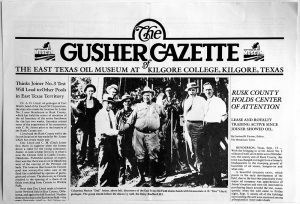 The wildcatter Columbus Marion “Dad” Joiner was undeterred by research advising against drilling near Kilgore. Along with Joseph Idelbert Durham (aka “Doc” Lloyd), a snake-oil salesman masquerading as a geologist, Joiner persuaded investors to finance his drilling operation on Daisy Bradford’s farm, about 16 miles south of Kilgore. His third well on her property, the Daisy Bradford No. 3, hit the jackpot in October 1930. As the first to tap into the massive East Texas oil field, which stretched 40 miles long and 12 miles wide, it was referred to as the “Discovery Well.” The well is still active and can be found with a hand-drawn map available at the East Texas Oil Museum. The derrick and the crowds are gone, but a solitary pump jack nods to itself as the breeze whispers through the pines.
The wildcatter Columbus Marion “Dad” Joiner was undeterred by research advising against drilling near Kilgore. Along with Joseph Idelbert Durham (aka “Doc” Lloyd), a snake-oil salesman masquerading as a geologist, Joiner persuaded investors to finance his drilling operation on Daisy Bradford’s farm, about 16 miles south of Kilgore. His third well on her property, the Daisy Bradford No. 3, hit the jackpot in October 1930. As the first to tap into the massive East Texas oil field, which stretched 40 miles long and 12 miles wide, it was referred to as the “Discovery Well.” The well is still active and can be found with a hand-drawn map available at the East Texas Oil Museum. The derrick and the crowds are gone, but a solitary pump jack nods to itself as the breeze whispers through the pines.








